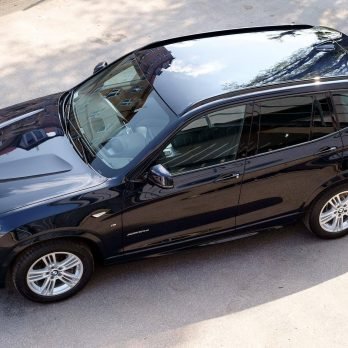Whether you are planning to make a Road Trip to the most beautiful cities in the USA or to visit Australia or Europe, a home on four wheels humming away into adventures – the van life has become a concept synonymous with slow travel and love of camping. If you have the cash for it, buying an RV or a pricey camper is a no-brainer. But there’s a whole community growing worldwide of people who’ve transformed ordinary vans into campers for much less money, and the results are really inspiring to look at.
The process of transforming the van is an adventure in itself – it’s really rewarding to work. Don’t be intimidated by everything that needs to be done, but rather refer to these tips to help you out and get you closer to your travel home.
Planning your budget
You’ve probably already seen numerous examples of camper-van conversions, from very elaborate, fancy projects to nifty and cheap ones that are completed in a matter of weeks. With that said, you really can’t have an approximate figure of how much the conversion would cost, because the projects vary greatly.
The best way to get an idea of the amount of money you’ll need to set aside is by deciding what exactly you want your camper to be like and what facilities you’ll require suiting your traveling style. For example, if you intend to spend long holidays away from facilities, you’ll surely need to include a washroom or toilet, but you might actually not need one if you plan to only stay in camps with facilities.
Jot down a list of all the facilities and gadgets you want your camper to possess. Do your research, look for second-hand alternatives, and write down the prices to get an idea of the money you’ll be spending. If it seems like too much, eliminate whatever is not essential because you can always get back to it and improve your camper with time.
Vehicle requirements
You might already have a van, but as disappointing as that sounds, the vehicle you planned to transform into a home might not be adequate for what you intended. The most important thing to consider is interior height.
The average cargo van has an interior height of about 140cm, which does not allow enough standing room. You’ll need more than that to perform activities inside comfortably, so don’t refrain from looking to do some business and exchanging your van for a high-top one. Scour your local used car dealerships and the internet and you’ll be sure to find just the right thing.
Whether you’re getting a new vehicle or you already have a van that’s perfectly fit for conversion, make sure that you consult with the auto service center before ripping the seats out and starting out on all the work. Get a full check-up and ensure everything works smoothly – don’t wait for the end of the project to do this.
Designing the interior
Once the seats have been removed, a smart thing to do would be selling them online – that way you can cover some of the expenses that follow with the money you’ve earned. With the space emptied out, get your measuring tape out and measure each bit of it.
Draw up plans, rely on example layouts and make full-scale mock-up layouts inside using cardboard and tape. With full-scale mock-up prototypes, you’ll get a much better feel for space. It can get really cramped, so laying the space out to maximize efficiency is really crucial.
Stack functions vertically so that each area serves multiple purposes and uses every little bit of leftover nooks for neat storage. Take your time with this and design to your needs – personalize your build and implement your designs in stages.
You might want to make everything by yourself, such as the bed frames and the kitchen, but luckily there’s plenty of first-hand advice from people who’ve already done it. Whatever you do, don’t rush with anything and get help if you can, because it’s much harder to go back and fix things.
Focus on value for components
As we’ve mentioned earlier, you might want to make everything by yourself. That’s because everything in a camper (such as bed frames, kitchen) etc. would have to be custom-built, and it’s just not worth it. You’ll find that there are so many options out there regarding amenities, but don’t be fooled that the pricier ones are necessarily better.
Camper components are the most expensive but they’re easy to avoid with simple hacks. For example, a pressurized camping shower gives much better value for money than the expensive hydronic hot-water systems. A Coleman stove for your kitchen costs 19 times less than the diesel stove, and it does the job just the same. So, a sincere tip is to choose wisely and look around for other options if something seems expensive because you’ll surely find them. Regarding electricity, solar panels on the roof have proven to be the smartest solution. They’re an investment, but definitely a worthy one.
Once you have everything you need and add the finishing touches, the camper will really feel like home – because you’ve put so much effort into making it. It’s your work of art, so enjoy the view for a while and give yourself a pat on the back. With the finished product, you’ll be ready to set out on the road with a feeling of pride.
Remember that you can find vans to rent for road trips with the best deals in CarRental.Deals! 🔥










